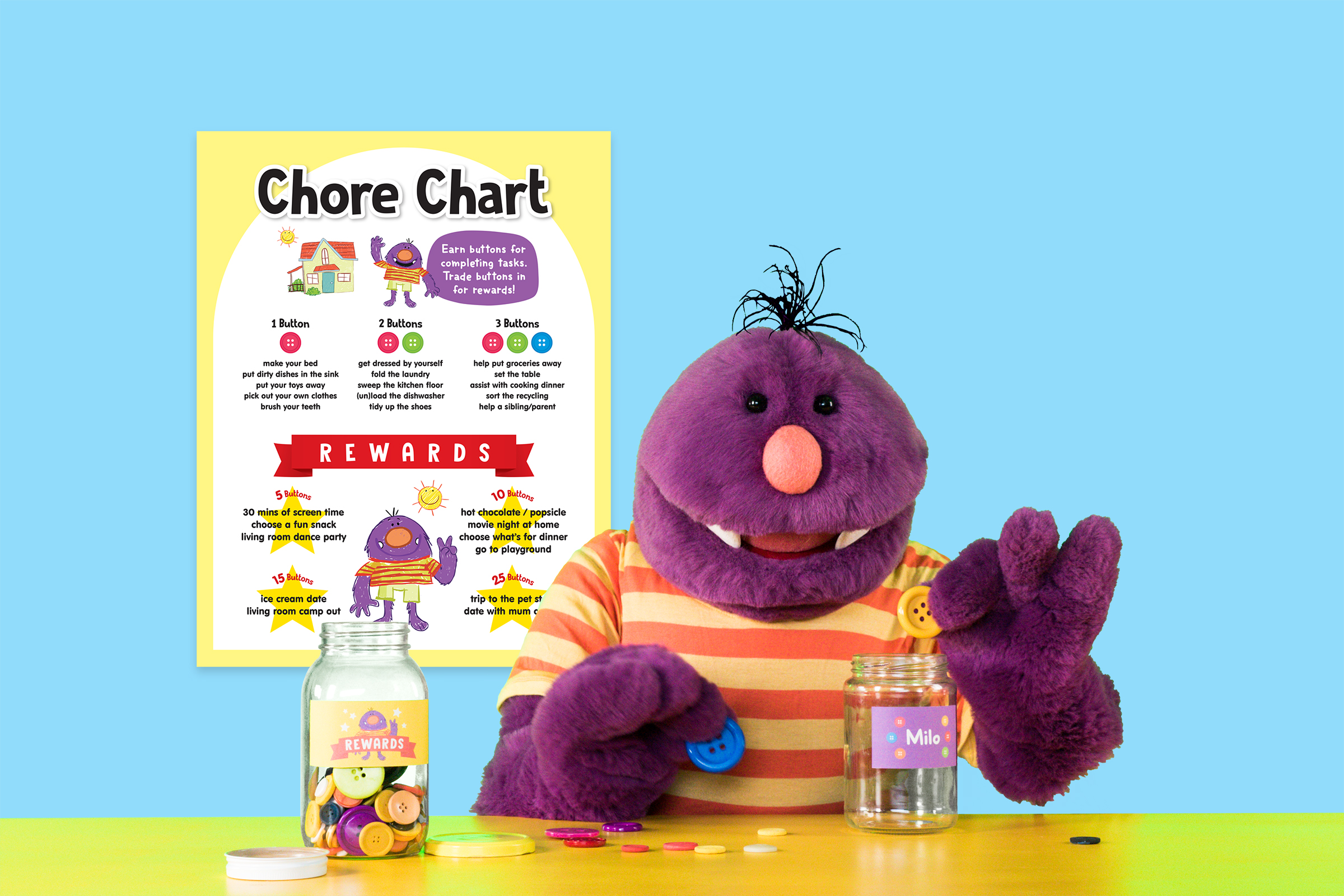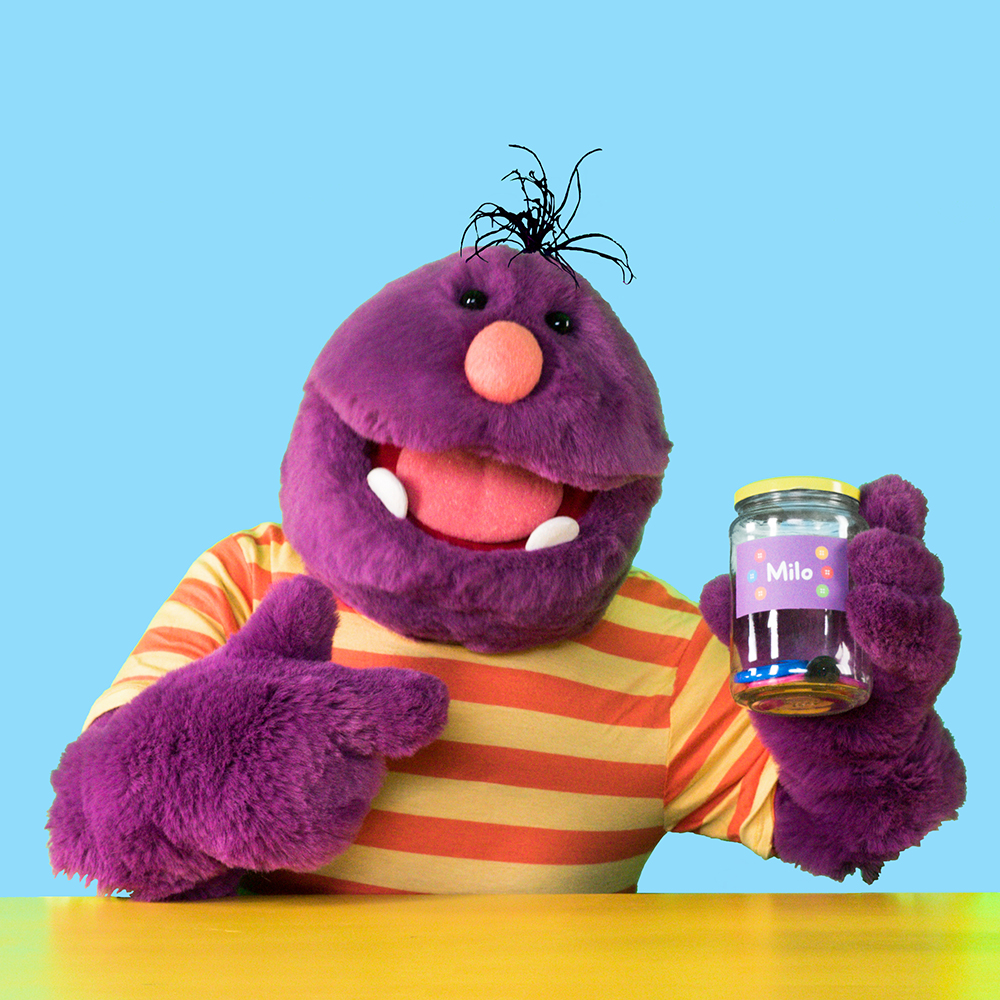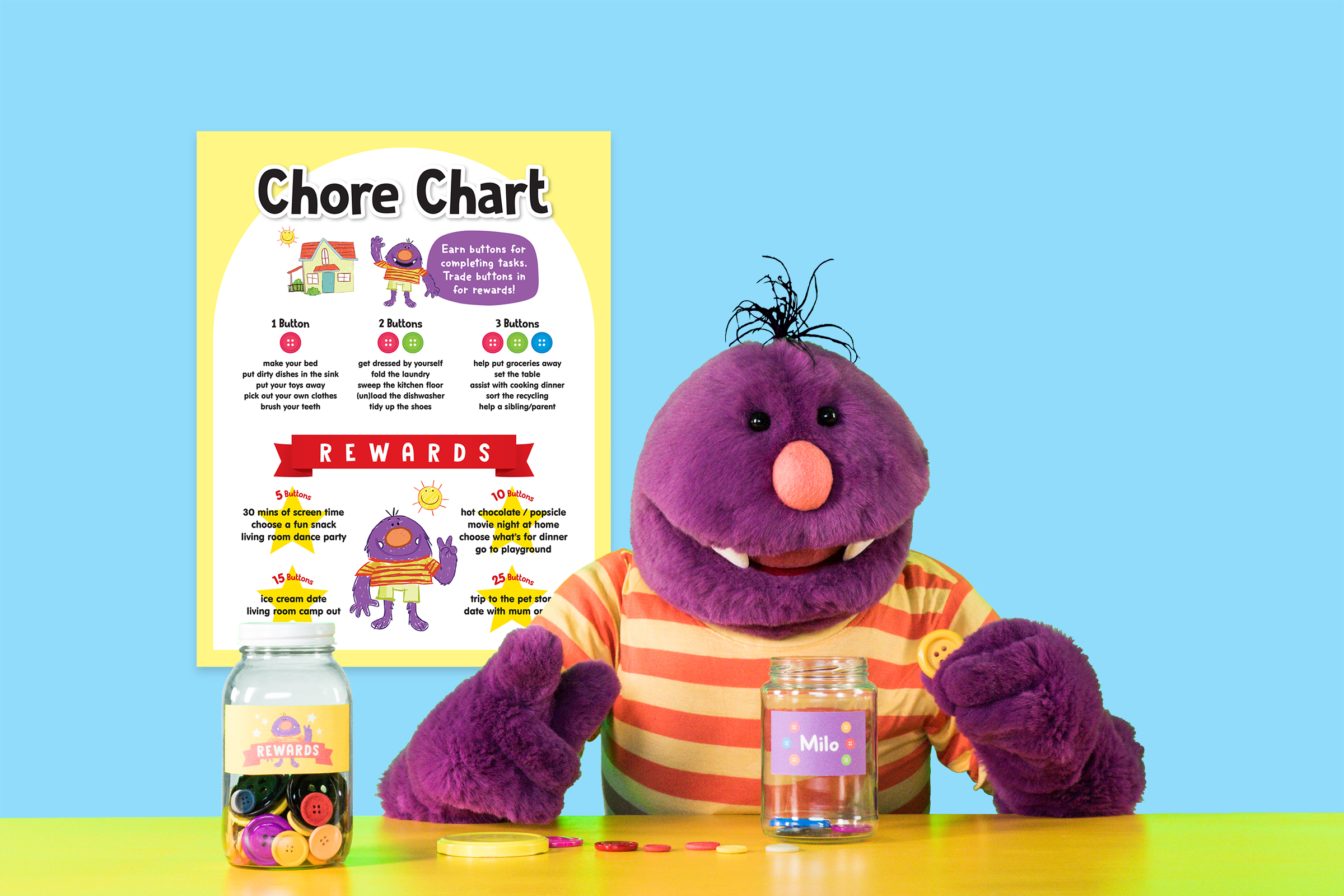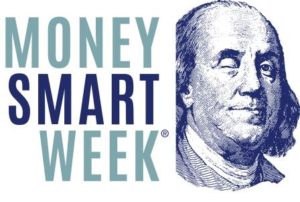
“Children as young as three to five years of age are developing the basic skills and attitudes that lay the foundation for later financial well-being.”
– Consumer Financial Protection Bureau.
Resources for Parents and Caregivers
These skills are known as “executive function” and they lay the groundwork for future decision-making by building our capacity to plan for the future, focus attention, remember information, and manage multiple tasks. Although this sounds complicated, parents can play a pivotal role in facilitating their child’s development by talking with their children about basic money management ideas like earning, saving, planning, and spending that all rely on the elements of executive function.
Parents can reinforce these ideas through play as well and “on the job training” so to speak, when they are out and about with their children in the neighborhood and/or the store.
We have also created a Super Simple Chore Chart lesson featuring Milo Monster that is designed to assist with teaching even the smallest earners the value of a job well done.
Here are some tips from the Consumer Financial Protection Bureau to get you started on the path of teaching your child smart money handling.
EARN
Share with your child that the way you get money is by working to earn it.
Describe your job to your child or, as you are out in the neighborhood or community, point out people who are working different jobs and describe what they do.
- Point out people working like the bus driver, police officer, cashier, and your child’s teacher or caregiver.
- Share that these individuals earn money for the work they do which helps them to pay for items like homes, food, clothes, etc.
- Play pretend with your child and ask him or her to imagine working one of these jobs. What would the job be? What would the day-to-day work be? What would the money earned go toward?
SAVE
Once we get money it is important to think about putting some aside for the things we want in the future.
- Start a piggy bank or saving jar with your child, have them help you decorate and label it, and put is someplace out in plain sight.
- Practice sorting change with your child so that they start learning the names and values of coins and cash. Have them sort into categories of things you need to buy every day and things you want to save for in the future i.e. food, housing (now), vacation, large purchase (later).
- When they receive money ask them to put all or part of it in the piggy bank or jar and have them tell you what they are saving for. See our Chore Chart activity with Milo Monster below for a Super Simple way to implement this idea.
PLAN
It helps to pay attention, remember, and adjust.
- Games help build skills that might not seem related to money management – but they form an important foundation.
- Playing musical chairs or Simon Says help your child pay attention and make quick decisions.
- Guessing games like 20 Questions or I Spy can help your child exercise his or her memory and think creatively.
SHOP
You need money to buy things and spending money always means making a choice.
- As recommended above, help your child sort out change into their different denominations and help them to identify different coins and their value.
- Encourage them to put some of them away in their piggy bank or savings jar and then talk about what they would like to spend the rest on.
- When you are at the store or in the neighborhood point out to your child items that cost money, such as food, clothes, pets, cars, etc.
- Talk about how your family decides what to buy and what to pass up and let him or her practice, too.
- Give your child a few dollars and let him or her choose what to buy with what they have.
One program that we have begun is the Money Smart Week® Kids Read program, piloted this year, which is designed to provide a fun way for parents and caregivers to establish the building blocks of saving and goal setting through story time at a local library. Each child attending a Money Smart Week® Kids Read program will be able to take home a free copy of Those Shoes by Maribeth Boelts, an exploration of needs versus wants and adults receive a free Consumer Financial Protection Bureau discussion guide to reinforce the learning

Milo Monster’s Chore Chart
Here is a fun activity designed to teach your child about the value of a job well done. Even toddlers can do simple chores to learn “currency” (in this case, buttons), to trade in for rewards!
We’ve included the chore chart that Milo designed with Momster. It highlights some chores he can do around the house to be helpful, and some of his favorite treats that he can trade his earned buttons in for. Tasks that are more skilled, or take more time have a higher number of buttons as rewards!
Use our blank templates to make your own chore chart and button jar labels at home! Be sure to include tasks that are age appropriate for the children in your household, you can use Milo’s as inspiration!
Supplies:
- Printed blank chore chart (.pdf)
- 2 clean jars (any shape or size)
- Two labels (download ours, or make your own)
- Glue or tape to affix labels
- Buttons
- Pennies, marbles, dried beans, or other small objects can be substituted

If you had fun learning with Milo Monster, check out his Monster School Vlog!
Don’t forget to follow us on Twitter, Instagram and Facebook!
Written in Partnership with

Money Smart Week® is a national education campaign designed to help consumers better manage their personal finances. Started by the Federal Reserve Bank of Chicago in 2002, the program consists of public and private partner organizations offering thousands of free classes, seminars and other educational activities. Learn more on Twitter or Facebook!
Original content © 2018 Super Simple. Not to be reprinted without express written permission. Terms of Service.

